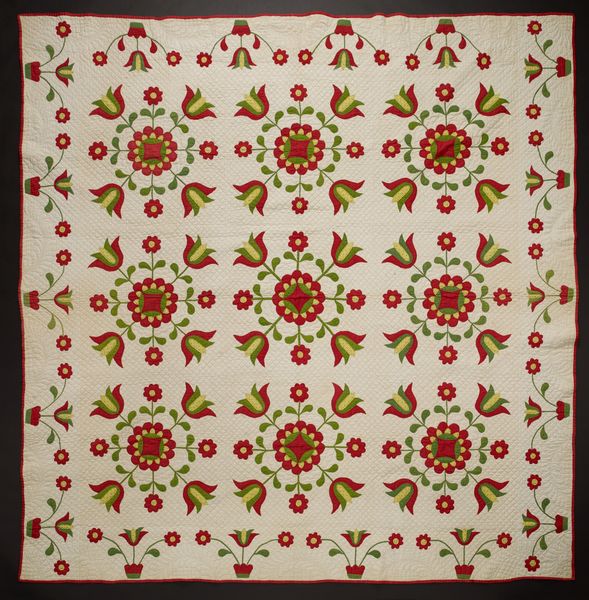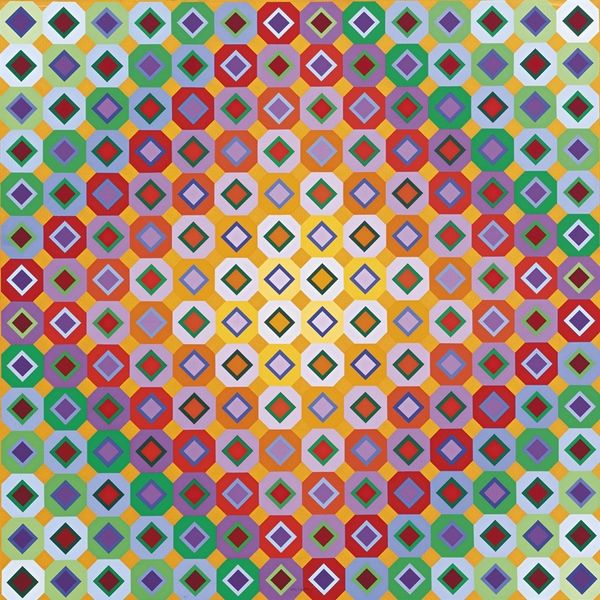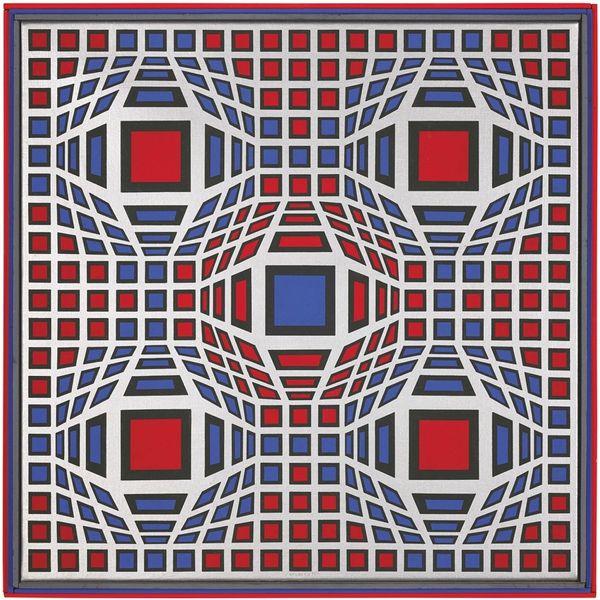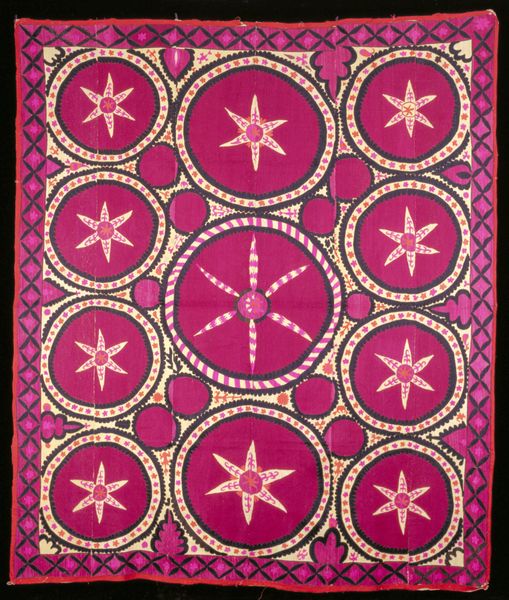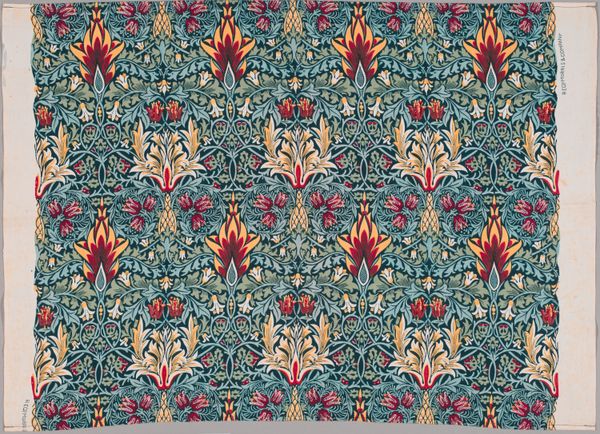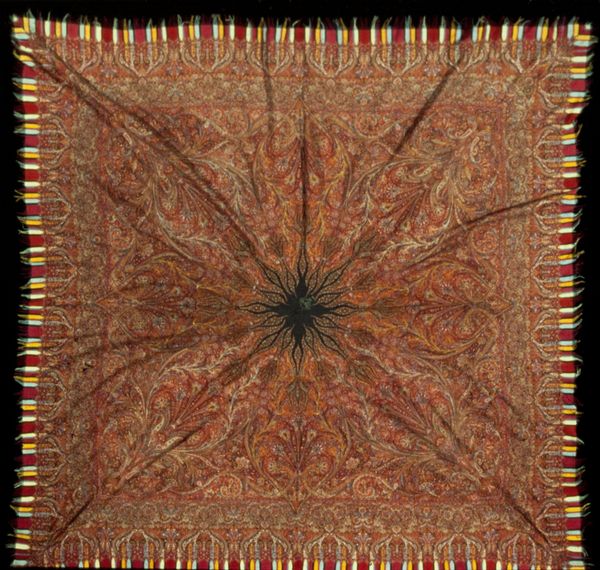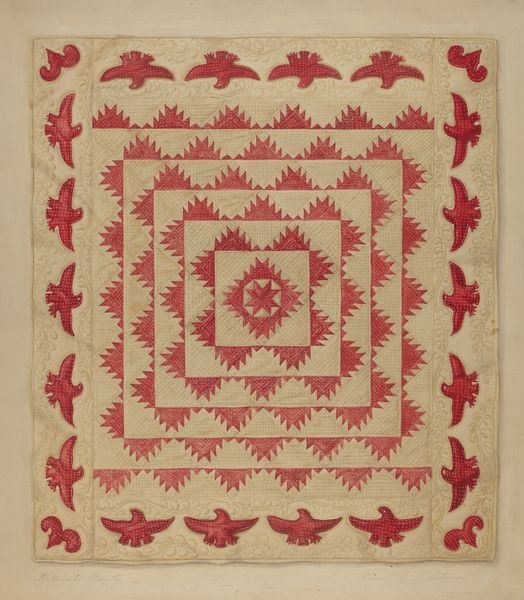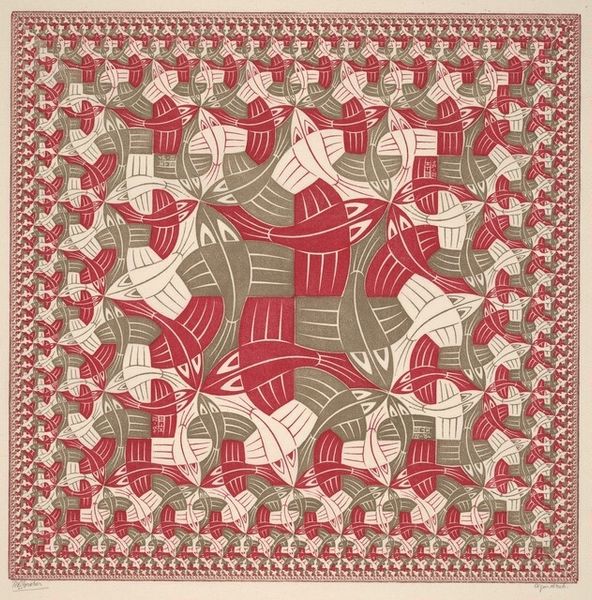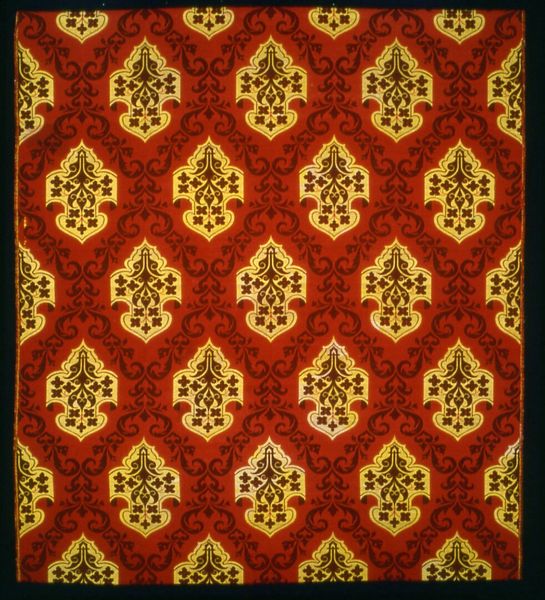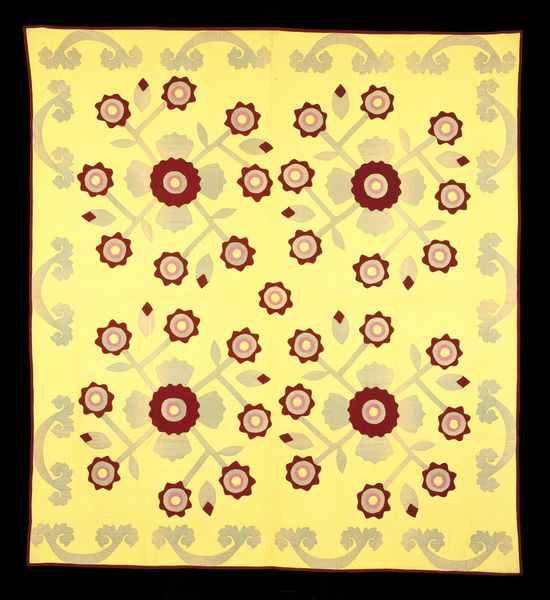
textile, cotton
#
textile
#
geometric pattern
#
pattern design
#
folk-art
#
organic pattern
#
repetition of pattern
#
vertical pattern
#
pattern repetition
#
cotton
#
decorative-art
#
layered pattern
#
funky pattern
#
combined pattern
#
repetitive pattern
Dimensions: 86 1/8 x 84 1/16 in. (218.76 x 213.52 cm)
Copyright: Public Domain
Curator: Before us, we have a quilt known as "Whig Rose Variations Quilt," created around 1860. The textile, primarily made of cotton, resides here at the Minneapolis Institute of Art. Editor: Oh, that's gorgeous! It has such a cozy feel—like sinking into a sun-drenched meadow on a crisp autumn day. Is it just me, or does it have a bit of a vintage botanical illustration vibe? Curator: Precisely. Notice the geometric, layered patterns, their vertical alignment and repetitive design. One can clearly see a strategic manipulation of form through repetition and mirroring that produces what is essentially a decorative and visually engaging surface. Editor: And that sunny yellow background really pops! It makes the reds and muted greens sing. Do you think the maker had a specific symbolic intention, or was it more about pure aesthetics? Maybe to keep winter blues away? Curator: Symbolism within such quilts is manifold. The Whig Rose pattern, popular throughout the mid-19th century, speaks to notions of American identity during a volatile period. But it could easily act as a purely decorative symbol, of organic growth tamed by the gridded layout common to this form of American Folk Art. The regularity creates both structure and potentiality. Editor: Potentiality—I like that. There's something inherently optimistic about it, even within that strict grid. Like life trying to burst through even the most ordered of existences. It really highlights the beauty of domestic creativity, the intersection of the handmade with… geometry! Who would have thought? Curator: Indeed. The interplay of geometry and organic forms exemplifies a complex interaction, yielding visual texture with intellectual underpinning. The creator uses simple means to a potentially deep symbolic effect, through simple combinations, even on a basic grid. Editor: Makes you wonder about the stories this quilt could tell. About quiet nights, careful stitches, and a world unfolding one rose at a time. Maybe I will even make one someday...though maybe on a smaller scale, like for a table runner. Curator: Ultimately, observing the intersections of aesthetics, function, and cultural context reveals something much deeper. This cotton assemblage encapsulates not only skill, but the capacity for functional art to provoke thought in its deceptively subtle language.
Comments
minneapolisinstituteofart almost 2 years ago
⋮
The rose is a common motif used for appliquéd and pieced quilts, with as many as thirty rose-related block patterns appearing in historical quilt sources. The Whig Rose pattern was very popular in the mid-nineteenth century, and was originally called the Democratic Rose, reflecting it's association with two early American political parties, the Whigs and the Democrats, each claiming the pattern as their own. This quilt is unusual for its bright yellow ground, which makes a striking contrast to the red and green color scheme. The use of two distinct variations of the block pattern contributes to its visual interest and attests to its creator's inventiveness.
Join the conversation
Join millions of artists and users on Artera today and experience the ultimate creative platform.
